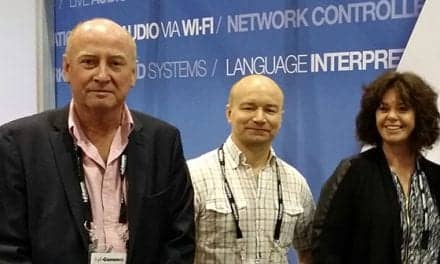He was right. Only gods mess with electrons. Only a fool would shoot them into the air. And yet, I’m in a conference room with a scientist who is going to let 120 volts fly out of the wall, on purpose.
"Don’t worry," says the MIT assistant professor and a 2008 MacArthur genius-grant winner, Marin Soljacic (pronounced SOLE-ya-cheech), who designed the box he’s about to turn on. "You will be OK."
Wireless juice: A primer
TECH 1: Inductive Coupling
Availability: April
THE FIRST WIRELESS POWERING SYSTEM to market is an inductive device, much like the one Tesla saw in his dreams, but a lot smaller. It looks like a mouse pad and can send power through the air, over a distance of up to a few inches. A powered coil inside that pad creates a magnetic field, which as Faraday predicted, induces current to flow through a small secondary coil that’s built into any portable device, such as a flashlight, a phone or a BlackBerry. The electrical current that then flows in that secondary coil charges the device’s onboard rechargeable battery. (That iPhone in your pocket has yet to be outfitted with this tiny coil, but, as we’ll see, a number of companies are about to introduce products that are.)
The practical benefit of this approach is huge. You can drop any number of devices on the charging pad, and they will recharge—wirelessly. No more tangle of power cables or jumble of charging stations. What’s more, because you are invisible to the magnetic fields created by the system, no electricity will flow into you if you stray between device and pad. Nor are there any exposed "hot" metal connections. And the pads are smart: Their built-in coils are driven by integrated circuits, which know if the device sitting on them is authorized to receive power, or if it needs power at all. So you won’t charge your car keys. Or overcharge your flashlight.
The dominant player in this technology for the moment seems to be Michigan-based Fulton Innovation, which unveiled its first set of wirelessly charged consumer products at the 2009 International Consumer Electronics Show in Las Vegas early this year. Come April, Fulton’s new pad-based eCoupled system will be available to police, fire-and-rescue, and contractor fleets—an initial market of as many as 700,000 vehicles annually. The system is being integrated into a truck console designed and produced by Leggett & Platt, a $4.3 billion commercial shelving giant; it allows users to charge anything from a compatible rechargeable flashlight to a PDA. The tools and other devices now in the pipeline at companies such as Bosch, Energizer, and others will look just like their conventional ancestors. Companies such as Philips Electronics, Olympus, and Logitech will create a standard for products, from flashlights to drills to cell phones to TV remotes, by the end of this year.
TECH 2: Radio-frequency Harvesting
Availability: April
THE INDUCTION SYSTEMS are only the beginning. Some of the most visually arresting examples of wireless electricity are based on what’s known as radio frequency, or RF. While less efficient, they work across distances of up to 85 feet. In these systems, electricity is transformed into radio waves, which are transmitted across a room, then received by so-called power harvesters and translated back into low-voltage direct current. Imagine smoke detectors or clocks that never need their batteries replaced. Sound trivial? Consider: Last November, to save on labor costs, General Motors canceled the regularly scheduled battery replacement in the 562 wall clocks at its Milford Proving Ground headquarters. This technology is already being used by the Department of Defense. This year, it will be available to consumers in the form of a few small appliances and wireless sensors; down the road, it will appear in wireless boxes into which you can toss any and all of your electronics for recharging.
TECH 3: Magnetically Coupled Resonance
Availability: 12-18 months
INVENTED BY MIT’S SOLJACIC (who has dubbed it WiTricity), the technique can power an entire room, assuming the room is filled with enabled devices. Though WiTricity uses two coils—one powered, one not, just like eCoupled’s system—it differs radically in the following way: Soljacic’s coils don’t have to be close to each other to transfer energy. Instead, they depend on so-called magnetic resonance. Like acoustical resonance, which allows an opera singer to break a glass across the room by vibrating it with the correct frequency of her voice’s sound waves, magnetic resonance can launch an energetic response in something far away. In this case, the response is the flow of electricity out of the receiving coil and into the device to which it’s connected. The only caveat is that receiving coil must be properly "tuned" to match the powered coil, in the way that plucking a D string on any tuned piano will set all the D strings to vibrating, but leave all other notes still and silent. (This explains why Soljacic considers the machinery that create these frequencies, and the shape of the coils, top secret.)
Importantly, then, WiTricity doesn’t depend on line of sight. A powered coil in your basement could power the rest of the house, wirelessly. Will the cat be OK? "Biological organisms are invisible to, and unaffected by, a magnetic field," Soljacic says. While I am mulling that statement, he tells me the company will not yet reveal the name of its partners because those partnerships haven’t been formalized, but they include major consumer electronics brands and some US defense customers.
As has been the tradition since Tesla and Thomas Edison angrily parted ways in 1885, the enormous consumer demand for wireless electricity is begetting intense competition. Last November, a consortium of manufacturers coalesced around Fulton’s eCoupled system. But Fulton and WiTricity aren’t the only companies fighting to bring wireless electricity to market. WiPower, in Altamonte Springs, Fla, has also created an induction system and says it, too, is close to announcing partnerships. And Pittsburgh-based Powercast, an RF system, sells wireless Christmas ornaments and is testing industrial sensors for release this summer.
Just as Tesla derided his doubters as "nothing more than microbes of a nasty disease," some name-calling is inevitable in this increasingly heated battle. WiPower, for example, insists that the eCoupled technology approach has several problems. "Their system is very sensitive to alignment, and I’ve heard there’s a heating issue," says CEO Ryan Tseng. "Our system is more elegant, much less expensive, and easier for manufacturers to integrate." Meanwhile, Powercast calls Dave Baarman, Fulton Innovation’s director of advanced technologies, "irresponsible" for wondering aloud whether RF power solutions could be dangerous around pacemakers and powered wheelchairs. "It’s competitive drivel," says Steve Day, Powercast’s VP of marketing and strategic planning. "Baarman has been saying this for a couple of years, because what we do will eventually replace what he does."
But as I stand, covering myself, in that featureless suburban conference room, such bickering fades to background noise. Because with Tesla’s 100-foot-long lightning bolts and blue grass vivid in my mind, I have a big question: Will Soljacic, the MacArthur Foundation fellow, be able to turn on that Toshiba TV from across the room? Or will I be bathed in a magnetic field so intense my molecules all align to face true north?
After he flips the switch, the little television, five feet away, springs to life. Wirelessly. The DVD player inside spins up to a low whine. Colors flicker on the moving screen. And Soljacic’s eyes dance with the reflected light of the image.
Paul Hochman is the host of MSN.com’s GearDaddy and the gear and tech editor for Today on NBC.
[Source: MSN Tech and Gadgets]




